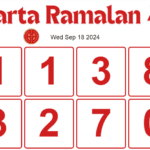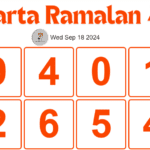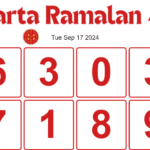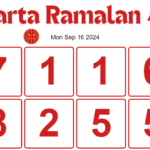The STC Lottery is a popular lottery game known for its engaging format and rewarding prizes. This page provides an in-depth look at the history of STC Lottery, its rules, and other essential details to help players understand the game and maximize their chances of winning.
History of STC Lottery
Origins
The STC Lottery was introduced to offer players a captivating and exciting lottery experience. It combines traditional lottery elements with modern features, appealing to a wide range of players.
Initial Development:
- Concept: The STC Lottery was designed to provide a structured and engaging gaming experience. It aimed to offer players a chance to win substantial prizes while maintaining a straightforward gameplay format.
- Launch: The game was initially launched in select markets to gauge player interest and refine its features. Early adopters were introduced to its core mechanics and prize structure.
Evolution and Milestones
Early Introductions:
- Initial Launch: The STC Lottery debuted in specific regions, where it was well-received by players due to its unique format and attractive rewards.
- Market Expansion: Following a successful introduction, the STC Lottery expanded to additional regions, increasing its popularity and player base.
Significant Changes:
- Game Format Updates: The STC Lottery has undergone several updates to enhance player experience. These updates include modifications to the number selection process and adjustments to the draw frequency.
- Prize Structure Enhancements: The prize structure has been refined to offer more competitive and rewarding opportunities. These enhancements include adjustments to jackpot and secondary prize tiers.
Key Milestones:
- Record Jackpots: The STC Lottery has experienced several record-breaking jackpots, contributing to its reputation as a rewarding lottery game.
- Major Events: Significant events in the game’s history include notable rule changes and expansions that have shaped its current format and appeal.
Growth and Popularity
The STC Lottery’s growth can be attributed to its engaging gameplay and substantial rewards. Effective marketing strategies and partnerships have played a crucial role in boosting the game’s visibility and attracting a diverse player base.
Marketing and Promotion:
- Campaigns: Targeted marketing campaigns and promotional efforts have enhanced the STC Lottery’s reach. These campaigns are designed to attract new players and retain existing ones.
- Strategic Partnerships: Collaborations with retail partners and media outlets have further increased the game’s visibility and appeal.
Rules of STC Lottery
Detailed Gameplay Rules
Understanding the rules of the STC Lottery is essential for players seeking to participate and improve their chances of winning. This section provides a comprehensive overview of the game’s rules and gameplay mechanics.
Number Selection:
- Selection Process: Players select a combination of numbers from a predefined range. In STC Lottery, this typically involves choosing numbers from 1 to 6, though variations may offer different ranges.
- Manual vs. Quick Pick: Players can select numbers manually based on personal preferences or significant dates, or use the quick pick option for a randomly generated set of numbers.
Ticket Purchase:
- Availability: Tickets for STC Lottery can be purchased from authorized retailers or online platforms. Each ticket corresponds to a unique number combination, providing players with a chance to win based on their selected numbers.
- Ticket Price: The cost of a ticket is fixed, and players can buy multiple tickets to increase their chances of winning. The price is designed to be affordable and accessible to a broad audience.
Draw Process:
- Frequency: Draws for STC Lottery are held at regular intervals, such as weekly or bi-weekly, depending on the specific rules of the lottery operator.
- Draw Method: The draw process is conducted using a transparent and fair method to ensure equal chances for all players. Winning numbers are randomly selected and announced according to the draw schedule.
Participation
Steps to Enter:
- Choosing Numbers: Decide on your number combination. Players can either select numbers manually or use the quick pick option for a random set of numbers.
- Purchasing Tickets: Buy your ticket from an authorized retailer or online platform. Ensure your ticket is validated and stored safely.
- Waiting for the Draw: Keep track of the draw date and time. Winning numbers will be announced according to the scheduled draw, and players can check their tickets to see if they have won.
Examples:
- Manual Selection: You might choose numbers based on personal significance, such as important dates or lucky numbers. This approach allows players to select numbers that have personal meaning.
- Quick Pick: The quick pick option generates a random combination of numbers for you. This is useful for players who prefer a more spontaneous approach to number selection.
Prize Structure
The prize structure of STC Lottery is designed to reward players based on the accuracy of their number matches. The structure ensures multiple opportunities to win and provides clarity on how prizes are distributed.
Jackpot Prize:
- Winning Criteria: The jackpot is awarded for matching all the numbers on your ticket with the drawn numbers. This prize is typically the largest and most coveted.
- Jackpot Amount: The jackpot amount varies based on the number of tickets sold and the total prize pool. A higher number of tickets and prize pool usually result in a larger jackpot.
Secondary Prizes:
- Matching Fewer Numbers: Players who match fewer numbers can still win significant secondary prizes. For example, matching 3 or 4 numbers may result in a substantial payout.
- Specific Position Matches: Some variations of STC Lottery award prizes based on the position of matched numbers, adding an additional layer of strategy.
Prize Distribution:
- Total Prize Pool: The prize pool is distributed among winners based on the number of correct matches. Distribution is proportional to the number of winning tickets and prize tiers.
- Multiple Winners: If there are multiple jackpot winners, the prize is divided equally among them. This ensures fairness and equal reward distribution.
Historical Performance
Analyzing historical performance provides insights into trends and potential winning patterns. Understanding these patterns can help players make informed decisions and improve their gameplay.
Notable Results:
- Record Jackpots: Highlight major jackpot wins that have set records. Provide details on the winning amounts and their impact on the game’s popularity.
- Significant Payouts: Discuss other notable payouts, including secondary prizes that have been awarded. These examples illustrate the potential rewards of participating in STC Lottery.
Trends and Patterns:
- Winning Numbers: Analyze historical data to identify trends in winning numbers. For example, certain numbers may appear more frequently in draws.
- Patterns: Discuss any recurring patterns or anomalies in the draws, such as specific number combinations that have won more often.
Statistical Analysis:
- Probability and Statistics: Use statistical tools to examine the probability of various outcomes in STC Lottery. Include charts and graphs to illustrate trends in winning numbers and prize distribution.
- Visual Aids: Present data visually to help players understand trends. Graphs showing the frequency of winning numbers or prize distribution can be particularly useful.
Conclusion
The STC Lottery offers an engaging and rewarding gaming experience with its blend of traditional and modern features. By understanding the game’s history, rules, and prize structure, players can enhance their gameplay and increase their chances of winning. Whether you are new to the game or a seasoned player, the STC Lottery provides a thrilling opportunity to test your luck and aim for significant rewards. Remember to play responsibly and enjoy the excitement that comes with participating in this dynamic lottery game.









